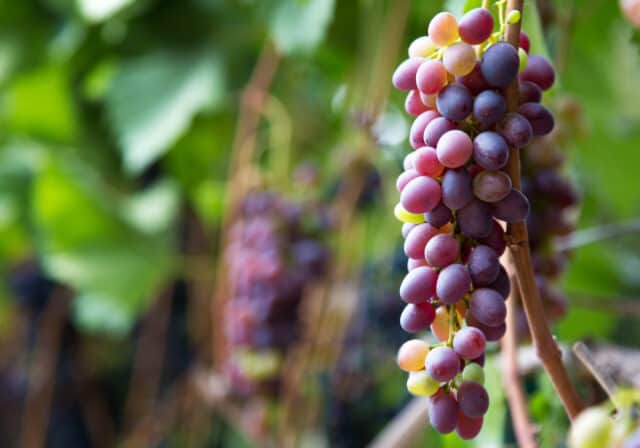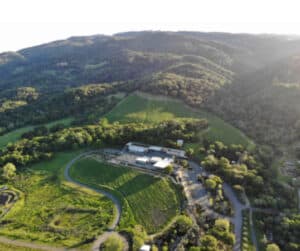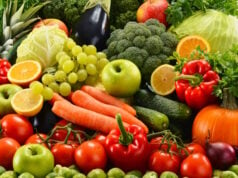
By Tom Marquardt And Patrick Darr
Wine producers are fond of saying the soil of their vineyards speak for their wines. The adage is so worn out that we rarely report it. It would take a producer growing wines in the worst possible region to not say their wine is a result of the particular vineyard soil. However tired the line, there is truth that soil can make a difference. For instance, grapes grown in nutrient-rich clay soil will influence wine differently than grapes grown in iron-rich volcanic soils.
Winemakers adjust to the soil they are given and that’s a herculean challenge for those producers stuck with volcanic soils. This is particularly the case in the Canary Islands where we recently visited to see vines barely peeking above dense, wind-swept volcanic rock. Coaxing vines to grow through rock requires patience.
John Hamel II, managing director of winegrowing for Hamel Family Wines, understands volcanic soil as good as anyone. His family has been meeting the challenge since it opened in 2006. Four vineyards, encompassing 80 acres, are planted in basalt, a byproduct of volcanic rock. The cabernet sauvignon and red blends reflect the struggle of these vines in producing dense, brawny wines.

The family vineyards in east Sonoma Valley near Kenwood is similar to Howell Mountain and Stag’s Leap AVAs just across the Mayacamas Mountains. The volcanic soil here is also common in Sicily’s Mount Etna, Greece’s Santorini, Italy’s Campania, Australia’s Yarra Valley and Oregon’s Willamette Valley – regions known for some very interesting wines.
Clay soils retain water, which keeps vines cool and allows for them to be grown in sunny areas. But volcanic soils produce concentrated wines that come from vineyard roots that struggle to grow along fissure lines in search of water. Although that sounds like an impossible challenge, producers such as Hamel embrace it.
Hamel said the family has adopted a natural approach to farming. Although they irrigate young vines to get them established, eventually the roots must find their own water. Nearly 75 percent of Hamel vineyards are dry-farmed. That produces small grapes and low yields, but it also produces wines with deep concentration.
The other factor in connecting to place is the adoption of biodynamic farming. They make their own compost, use homeopathic natural plants around the vineyards and let animals graze between vines.
“We are trying to create harmony,” Hamel said.
He said the soil has so much iron that placing a magnet next to it will make the soil dance.
The result of the vine’s struggle to absorb iron and find water is evident in the three Hamel wines we tasted. The 2019 Hamel Isthmus — a blend of cabernet sauvignon, merlot, cabernet franc and petit verdot – has iron in the aromas and mineral in the flavors to augment the rich, black fruit character. The abundant rainfall between November and April made the vintage extraordinary.

The 2018 vintage was cooler and wetter in early winter and spring, but that didn’t seem to hamper the Nuns Canyon Vineyard cabernet sauvignon and cabernet franc blend we tasted. Hamel said the roots follow the fissures in the basalt and dive deep for water. He said the soil gives the wine minerality, power and a specific signature. It has a lot of herbaceous character to add to the dark cherry flavors.
Perhaps the giant of the lot is the 2018 Hamel Pamelita Cabernet Sauvignon. It’s the proverbial iron fist in a velvet glove. Only 200 cases are made and it’s very pricey.
Hamel doesn’t over-oak its wines and instead employs stainless steel and cement fermentation vessels. Hamel said they used large oak casks for the 2020 and 2021 vintages.
These wines aren’t cheap but their prices reflect the same degree of quality that goes into similarly expensive wines from Napa Valley and Bordeaux.
Stonestreet
The changing climate around the world has forced grape growers into leaving their comfort zone in search of different grape varieties that will tolerate heat, experimenting with new viticultural practices and modifying how they make wine. It’s a revolutionary era that eventually will preserve the industry and introduce consumers to new wines.

We recently interviewed Christopher Jackson, second-generation proprietor of Stonestreet Estate Winery, about how his family operation is adjusting. Jess Stonestreet Jackson and Barbara Banke launched the estate in 1995.
Located on Alexander Mountain, the vineyards are facing difficult growing conditions even before a warming climate.
He said in an email, “Over the last two decades, the extreme of winegrowing on the mountain has continued to grow in intensity. In 2004, recognizing the challenges in achieving physiological ripeness and high stress to the vineyards, we began implementing regenerative farming practices that could mitigate the growing intensity of conditions and foster resilience of the land and vines.”
He said he has identified more rigorous rootstock and clone combinations to reduce the stress on the vines. But the producer also has planted drought-resistant varieties, such as assyrtiko, chenin blanc and malvasia blanca. How these grapes fit into future wines – as a blend or stand-alone – remains to be seen.
With disappearing sources of water for irrigation. Stonestreet added reservoirs on the
mountain to capture the rainwater. Since 2008, water use across Jackson Family wineries has been reduced 43 percent.
Wine picks

Chappellet Las Piedras Winemaker’s Blend 2019 ($85). The name behind this luxurious wine is winemaker Phillip Corallo-Titus. A blend of all five Bordeaux grape varieties, it has a firm structure but a rich mouthfeel. Blackberry and oak-inspired clove and vanilla notes with hints of anise and spice.
Tenuta di Capezzana Villa di Capezzana Carmignano DOCG 2017 ($30). We always thought cabernet sauvignon was introduced to Tuscany in recent times, but in the 1500s, France Queen Catherine di Medici sent Bordeaux cuttings of the grape variety to Carmignano. Today is it has earned a place in most blends. Here cabernet sauvignon is 20 percent which gives lift to the sangiovese. Forward fruit flavors of black cherries and plums with hints of tobacco, spice and vanilla. Very easy and enjoyable quaff.
Poliziano Vino Nobile di Montepulciano DOCG 2018 ($30). Best consumed now, this blend consists of sangiovese, colorino, canaiolo and a bit of merlot. Dark in color and generous in aroma, it has plum, black cherry flavors with a hint of chocolate.
Republished with permission
Tom Marquardt and Patrick Darr have been writing a weekly wine column for more than 30 years. Additional Wine reviews on MoreAboutWine
All photos are randomly selected and do not indicate any preferred wine. Listed prices are subject to change and do not include tax or shipping.
You can send questions to Tom Marquardt mailto:marq1948@gmail.com
Always drink responsibly![/vc_message]












